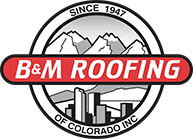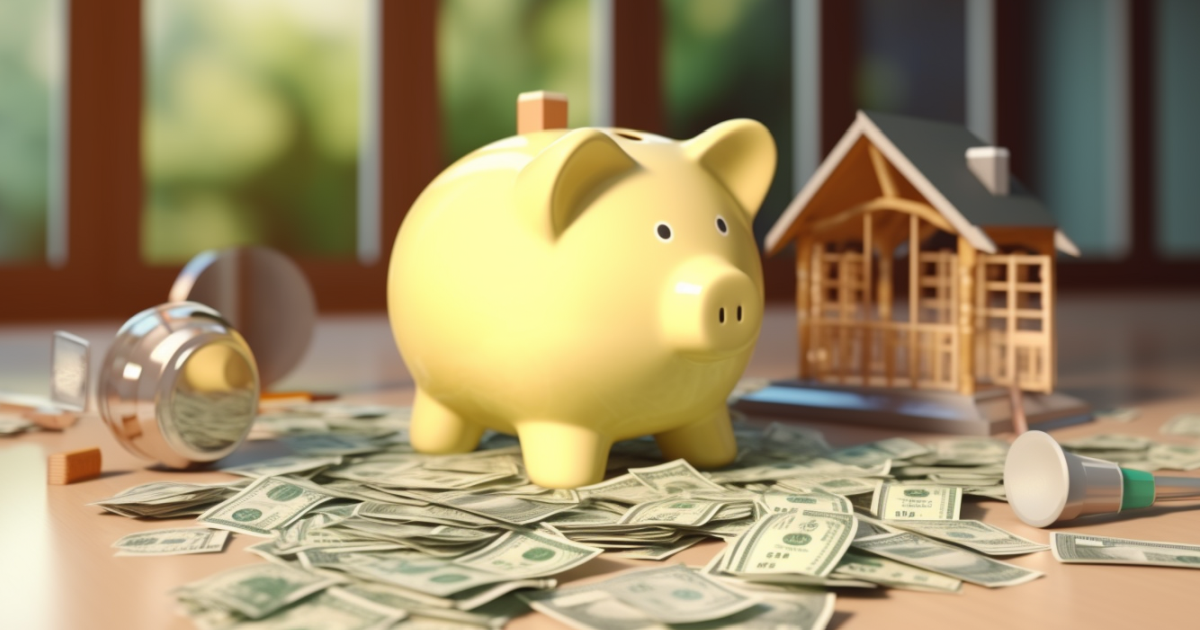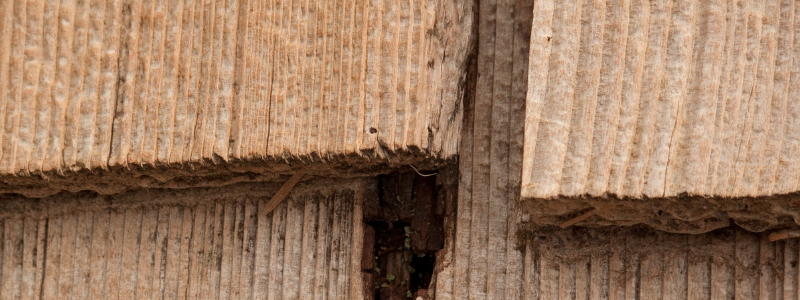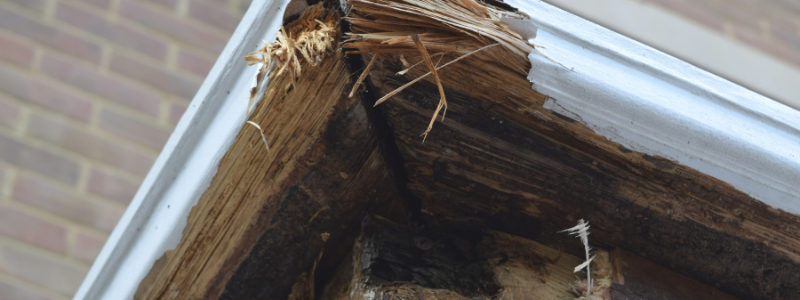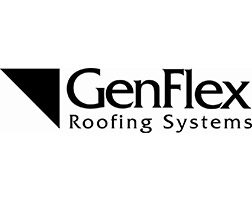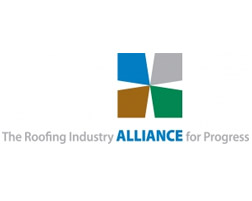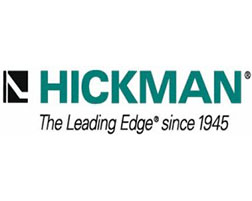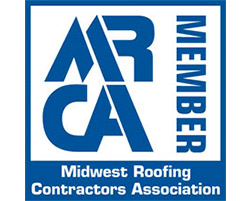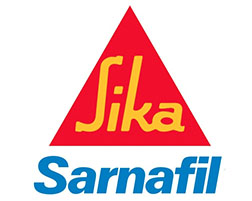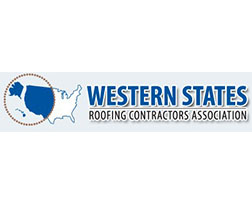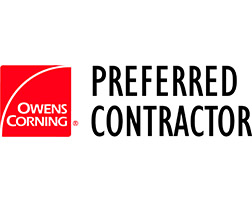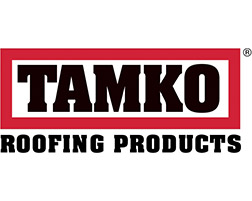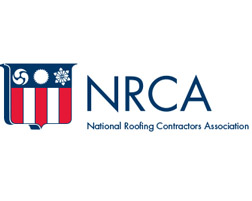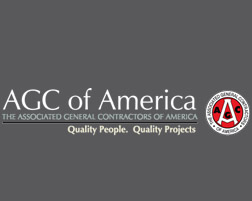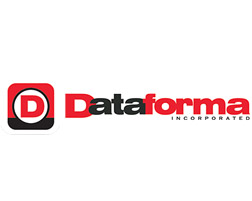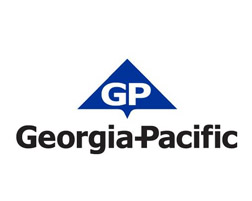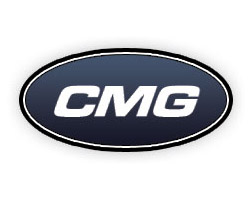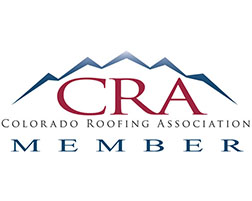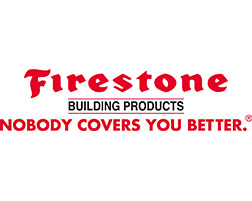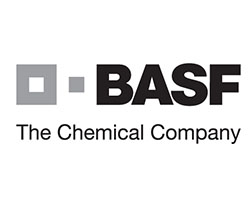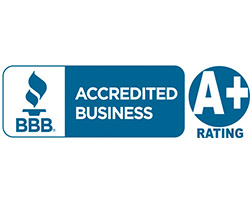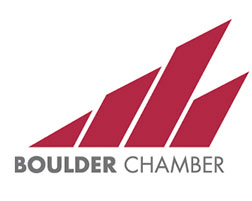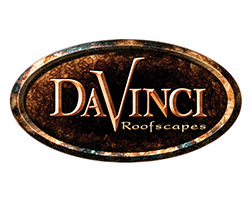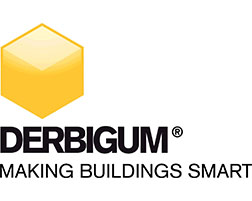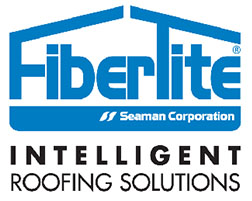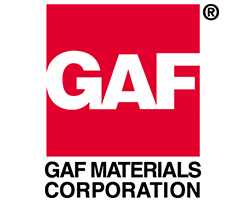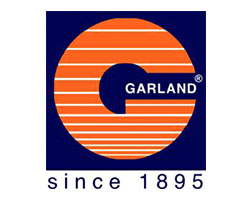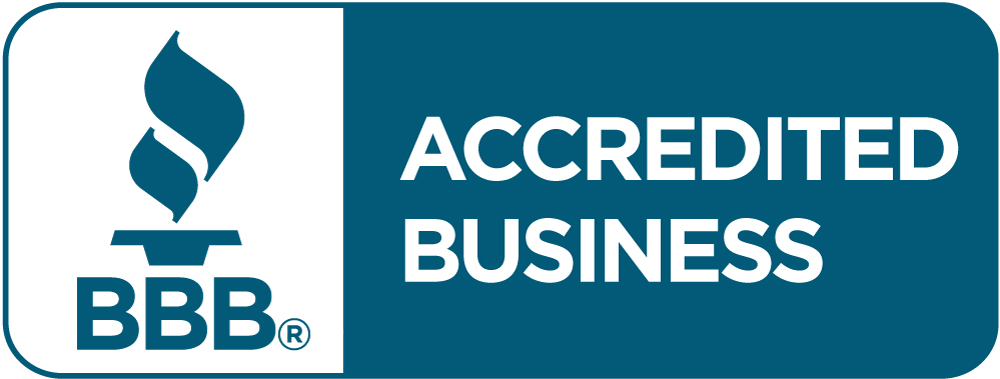Roof Cost Calculator
Whether you’re a homeowner or a business owner, understanding the ins and outs of roofing costs is not just about keeping the rain out—it’s about smart financial planning and protecting the value of your property.
Why Accurate Roofing Cost Estimates Matter
- Budgeting: Just like any home improvement project, a new roof requires a well-planned budget. Using a roof cost calculator helps you avoid the raincloud of unexpected expenses, ensuring that your finances stay as dry and secure as your freshly shingled roof.
- Property Value: A roof is more than just a functional necessity; it’s a long-term investment into your property’s worth. Accurate cost estimations contribute to making informed decisions that can enhance the curb appeal and market value of your property.
By the end of this article, you’ll see that a roof cost calculator isn’t just a tool—it’s your financial umbrella in the stormy world of roofing expenses. Stay tuned as we unfold the layers of roofing costs, just like we would a well-constructed roof.
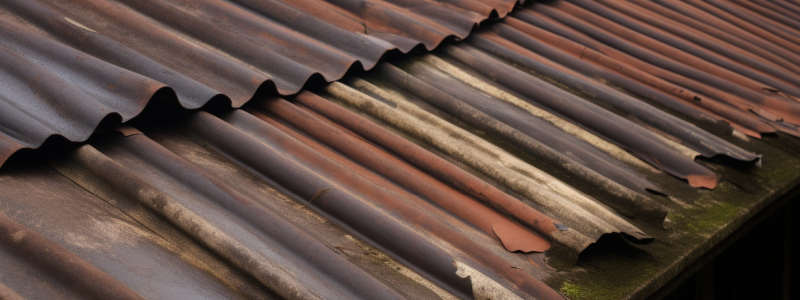
Understanding the Roof Cost Calculator
Navigating the financial aspects of roofing can be as complex as the layers of a roof itself. But fear not! The roof cost calculator is your trusty guide through this process, simplifying what could otherwise be an overwhelming task.
What is a Roof Cost Calculator?
In simple words, it’s an online tool that provides you with an estimated cost of replacing or repairing your roof without having to climb a ladder or know the intricacies of roofing. It takes into account various factors such as size, materials, and labor to give you a ballpark figure that you can use to plan your budget.
How Does It Work?
- Input Your Details: You’ll typically enter details about your roof, such as dimensions and preferred materials.
- Algorithm Magic: The calculator uses these inputs, along with data on current material costs and labor rates, to estimate your potential roofing costs.
- Instant Estimates: In a matter of minutes, you’ll have a cost estimate that helps you gauge the financial scope of your roofing project.
Remember, while a roof cost calculator is a fantastic starting point, it’s always wise to follow up with professional quotes for the most accurate financial planning. Stay tuned as we delve into the factors that can influence the cost of your roofing project.
Factors Influencing Roofing Costs
When it comes to roofing, the price tag is about as variable as the weather patterns that affect your roof’s wear and tear. Understanding the factors that influence roofing costs can help you navigate the estimates you’ll get from a roof cost calculator. Here’s a breakdown of the main components:
Types of Roofing Materials
- Asphalt Shingles: These are the most common and generally the most affordable roofing material.
- Metal Roofing: Durable and long-lasting, metal can be pricier but may offer better long-term value.
- Tiles: Whether clay or concrete, tiles offer a distinct look and can vary widely in price.
Labor and Installation
- Contractor Expertise: Skilled labor isn’t cheap, but it’s worth every penny for a job well done.
- Job Complexity: The more complex the roof, the higher the labor costs.
Roof Size and Design
- Square Footage: Larger roofs require more materials and more labor.
- Slope and Pitch: Steeper roofs are trickier to work on and can increase costs.
Geographic Location
- Local Labor Rates: These can vary significantly from one region to another.
- Climate: Areas with harsh weather may require more durable materials, affecting costs.
Remember, while these factors can give you a ballpark figure, there’s no substitute for a personalized quote. Stay tuned as we explore additional costs that might not be immediately apparent when planning your roofing project.
Additional Costs to Consider
When planning for a new roof, it’s crucial to look beyond the basic estimate your roof cost calculator provides. There are often additional expenses that, if not accounted for, can cause your budget to balloon like a hot air balloon in a clear blue sky. Let’s ensure your budget stays grounded by considering these potential costs.
Permits and Inspections
- Building Permits: Depending on where you live, you may need a permit to start roofing work, which can add to the overall cost.
- Inspections: Post-installation inspections might be required to ensure the work meets local building codes.
Repairs to Existing Structure
- Decking Repairs: If the structure beneath your shingles is damaged, it will need to be repaired before a new roof can be installed.
- Gutter Work: Sometimes, gutter systems need to be repaired or replaced in tandem with roofing work.
Unforeseen Complications
- Weather Delays: Bad weather can delay work and increase labor costs.
- Old Roof Removal: The cost of removing and disposing of the old roof can vary widely.
Remember, a well-informed homeowner is a well-prepared homeowner. By considering these additional costs, you can create a more accurate budget for your roofing project. Stay tuned for our next section, where we’ll share some insider tips on how to save money on your roofing project without cutting corners.
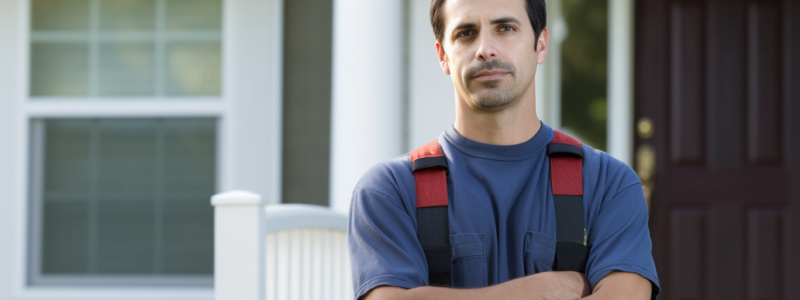
How to Save Money on Your Roofing Project
A new roof doesn’t have to mean a new mortgage. With some strategic planning and savvy decision-making, you can trim the fat from your roofing budget without compromising on quality. Here are some golden nuggets of advice to keep your wallet happy:
Choose the Right Materials
- Cost vs. Longevity: Sometimes, spending a bit more upfront on durable materials can save you money in the long run.
- Seasonal Sales: Keep an eye out for discounts on materials during off-peak seasons.
Time Your Project Strategically
- Off-Peak Discounts: Roofing contractors may offer lower rates during slower seasons.
- Weather Patterns: Planning around your region’s weather can prevent costly delays.
Get Multiple Quotes
- Compare Contractors: Don’t settle for the first estimate. Get several quotes to ensure you’re getting the best deal.
- Negotiate: Use the quotes to negotiate better rates with your preferred contractor.
Consider DIY Aspects
- Do Some Work Yourself: If you’re handy, you might be able to take on some of the work, like disposal of the old materials.
Remember, a little research and preparation can lead to significant savings. Up next, we’ll tackle some common questions about roof replacement costs to help you further understand the financial side of keeping a solid roof over your head.
Common Questions About Roof Replacement Costs
Embarking on a roof replacement project can feel like navigating a maze with questions at every turn. But don’t worry, we’ve got the answers to some of the most common queries that homeowners have. Let’s clear the air and provide you with the knowledge you need to move forward confidently.
How Long Do Roofing Materials Last?
- Asphalt Shingles: Typically, they last 15-30 years.
- Metal Roofing: Can last 40-70 years, depending on the material.
- Tiles: Clay and concrete tiles can last over 50 years.
Are There Warranties?
- Most roofing materials come with a manufacturer’s warranty, and many contractors offer additional guarantees on workmanship.
What Are the Benefits of Professional Installation?
- Expertise: Professionals have the know-how to install your roof correctly, which is crucial for longevity and performance.
- Safety: Roofing can be dangerous. Professionals have the equipment and training to do the job safely.
- Time-Saving: A professional team can complete the job much faster than DIY.
Armed with this knowledge, you’ll be better equipped to make informed decisions about your roofing project. Next, we’ll wrap up with our conclusion, reinforcing the value of a roof cost calculator and the importance of professional guidance.
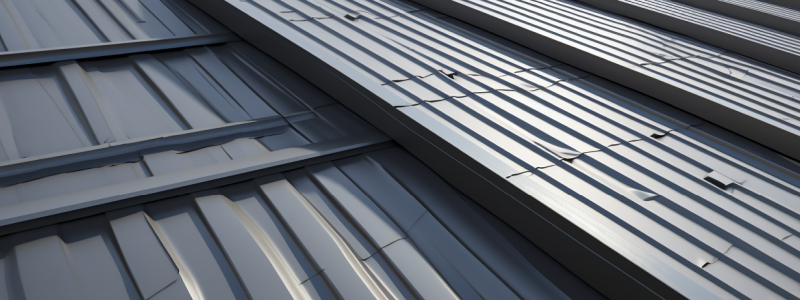
Your Next Steps
As we’ve navigated the complexities of roofing costs together, it’s clear that a roof cost calculator is more than just a handy tool—it’s an essential ally in your roofing journey. It empowers you with knowledge, preparing you for discussions with contractors and helping you to understand the financial commitment involved.
The Value of a Roof Cost Calculator
- Informed Decisions: With a clearer view of potential costs, you can make choices that align with your budget and your property’s needs.
- Planning and Budgeting: A roof cost calculator helps you to plan ahead, ensuring that you’re financially prepared for your roofing project.
- Professional Insight: While a calculator gives you a starting point, a detailed quote from a professional roofer tailors the estimate to your specific situation.
We encourage you to reach out to BM Roofing for a comprehensive quote and professional roofing services. Their expertise and customer-centric approach will provide you with peace of mind and a roof that lasts.
Workmanship Warranty Roofing
Protect your roofing investment with a reliable “Workmanship Warranty Roofing.” Understanding the difference between manufacturer and workmanship warranties is crucial. While manufacturers guarantee against defects in their products, it’s the workmanship warranty that ensures quality installation. Faulty installations can lead to premature roof failures, emphasizing the importance of hiring reputable Colorado roofing contractors. This article delves into the nuances of roofing warranties, signs of poor roofing practices, and the significance of choosing contractors who back their work with solid guarantees. B&M Roofing sets the standard with a five-year craftsmanship warranty, ensuring homeowners of quality and protection for their roofing investment.
Your roof is a major investment, and, barring weather damage, you have every reason to expect it to last its stated lifetime.
Of course, many factors apply to the lifespan of a roof including attention to ongoing and needed maintenance. In most instances, the life of a roof can span 25 or more years, provided the property is well maintained and there are preventive measures in place to ensure roof protection. Finding a reliable Colorado roofing contractor also proves to be yet another challenge and one that may impact the quality of the roofing job. That’s why it’s important to always ask about the workmanship warranty. So, how long do roofers guarantee their work? And what does a standard roofing workmanship warranty mean?
Most roofs are installed with a warranty on materials extended by the manufacturer, and most reputable roofing companies stand behind their workmanship. Because there are a lot of overlapping elements from the homeowner’s view, it can be confusing trying to understand how roofing warranties work. Let’s review some important elements of roofers’ guarantee for workmanship.
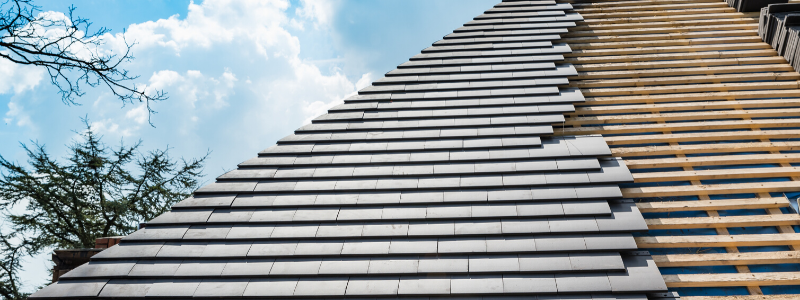
Roofing Manufacturer Warranty
Manufacturers typically guarantee their shingles and other residential roofing materials with a warranty on the exact style a homeowner selects. While this can come in any length, from 25- to 50-year coverage, it only protects you against roof failure caused by manufacturing defects. Weather damage, such as wind and hail damage, aren’t covered by warranties against defects in materials, nor are any other conditions that the manufacturer can’t control. Many manufacturer warranties require homeowners to show proof that they maintained their roof properly, as well.
It’s important to note that sometimes roofing material warranties and workmanship warranties overlap. However, this doesn’t always mean you’re protected, which is why it’s critical to continue with ongoing maintenance. Demonstrating that you’re proactive in keeping a roof in the best condition possible only serves to increase the chances that your homes’ roof is backed by some kind of guarantee. For a manufacturer’s warranty, most can cover you 20 to 50 years.
Craftsmanship Roof Warranties
How long do roofers guarantee their work? It’s often a question B&M Roofing of Colorado is asked frequently. First, note that if a roofing contractor is not backed by a workmanship warranty, it may put you at risk for faulty systems that can cost you much more in the long-run. Inquiring about the safety measures roofing contractors provide is usually step one in the process of installing a new roof and this includes protecting your investment. Hiring a highly rated Colorado roofer is ultimately going to determine the end product result and quality of work.
Manufacturer warranties don’t extend to damages caused by improper installation. Mistakes made during installation cause about half of the premature roof failures, so it’s critical homeowners choose a roofing company with well-trained installers and a warranty to back up their work. An improperly installed roof can take a couple of years to fail, so a lengthy warranty is just as important to protect your investment.
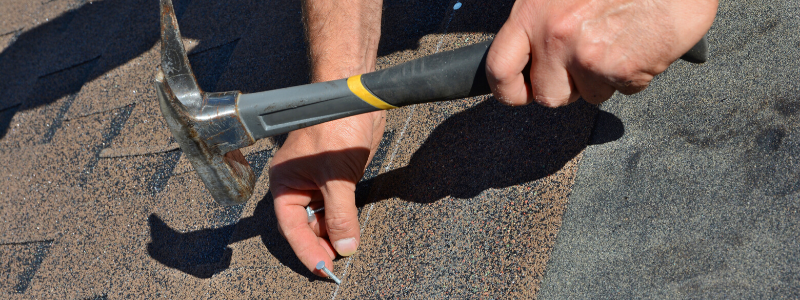
Warning Signs: Bad Roofing Practices
Beware of companies that try to force you into using only one material. Reputable roofing companies typically specialize in more than one type of roof. The company you hire should be able to provide a wide range of options based on your needs. They should be well-versed in start to finish processes and should be transparent in how work is conducted throughout the duration of the job.
Some of the warning signs you should be aware of after the installation of your new roof includes:
- Shingles curling and buckling
- Roof valleys
- Missing shingles
- Chimney flashing
- Shingle granules in the gutters
- Daylight through the roof boards
- The roof doesn’t look uniform
- New vents should be installed after every new roof installation
- Issues with nails such as overdrive, underdrive, or un-caulked nails
These warning signs can be an indication that the roof you purchased was not from a reputable source. If this has happened to you, reach out to the original roofer to see what warranty they offer on their craftsmanship. So, how long do roofers guarantee their work? The short answer is, it depends.
Standard Roofing Workmanship Warranty Explained
Basically, a standard roofing workmanship warranty covers installation and labor. You as the homeowner can be stress-free about any unexpected damages during the roof installation and/or roof repairs.
Ensuring project success requires that managers address timing, materials, warranties, and post-installation maintenance. Membrane-only warranties cover membrane failure only and do not include any labor costs for repair work. If labor costs are included, it might only be in the event that the membrane requires replacement. Craftsmanship warranties on a new roof usually offer extended protection for labor and installation. It can include items such as:
- Material
- Labor
- Insurance
- Debris removal
We always suggest that you read through the warranty to know just exactly what to expect may you need to come back to it at any time.
We’ll also help you read through any warranty before signing it.
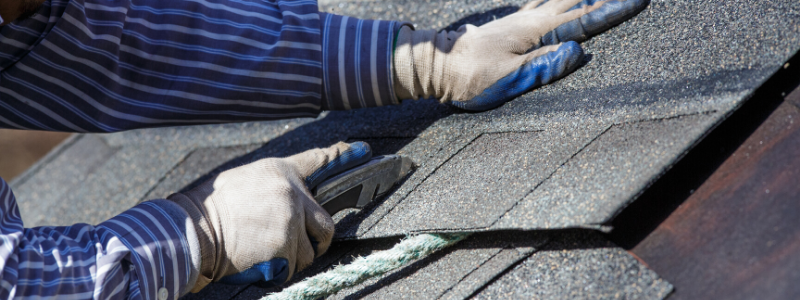
B&M Roofing and Warranties
B&M Roofing’s installation teams are experts in every type of roofing material, allowing us to extend a five-year craftsmanship warranty on all residential roofs we install. This covers all workmanship-related issues, and like a manufacturer warranty, it doesn’t apply to damage caused by weather, animals, fallen branches, or other acts of nature. Once the replacement project is complete, it is time to maintain the investment.
It is in the best interest of the manager and the organization to work with the installation contractor on a maintenance contract since they typically are responsible for workmanship repairs for the first two-five years of a favorable warranty. The industry has been on a spring and fall maintenance cycle, but managers should negotiate this point at the time of contract for the new roofing system since this can be a great bargaining tool to get a reduced rate for inspections.
When your roof fails, it’s not as important to understand how roofing warranties work, as much as know that you’re covered. Whether it’s craftsmanship or materials, B&M Roofing offers the coverage on all residential jobs to give homeowners the peace of mind they need to know their investment is protected.
Contact us today for expert roofing repairs, installations, emergency services, and much more.
Dry Rot vs Wet Rot
A strong roof over your home ensures protection from nature’s adversaries for you, your family, and your belongings. In return, homeowners must ensure they maintain the health of their roofs by eliminating any possible wet or dry rot infestations – but what is the difference between dry rot vs wet rot?
Both wet and dry rot are wood-destroying fungi that can cause structural damage to any property and should be treated immediately. Wet and dry rot may appear as a result of poor internal plumbing or penetrating moisture caused by malfunctioning guttering and downpipes.
The problem can easily fly over our heads as rot hides beneath the surface of your shingles and above attic insulation.
It’s easy to avoid wet and dry rot with regular roof inspection and maintenance. If you have spotted signs of rotting within your property, don’t hesitate to contact B&M Roofing for consultation and advice.
Differences Between Wet Rot and Dry Rot
The main difference between wet rot vs dry rot is that there are many types of wet rot. However, there is only one type of dry rot fungi. Telling the difference between the two is the first step to the successful elimination of a possible outbreak.
When it comes to dry rot and wet rot, it’s best to have both resolved immediately. However, dry rot can be more aggressive and destructive. Infestation can spread from the source to surrounding timber and other property materials. Dry wood rot attacks structure materials with lower moisture (20%-30%) and is extremely versatile, as it can spread through building fabrics and the property’s brickwork.
On the other hand, wet rot occurs more frequently but tends to be more localized. Wet rot also requires higher moisture content (30%-50%) to grow, while dry rot can germinate at lower moisture levels. Although wet rot spreads less than dry rot, it can still cause major structural problems if left untreated.
Dry Rot: Serpula Lacrymans
This form of rot is considered the most serious form of fungal decay in buildings. Dry rot can affect any timber which holds a moisture content of 20%, which is achieved easily in a climate like Colorado’s.
Identifying Dry Rot:
- Cracking and crumbling along the grain of the timber
- Timber is soft and spongey
- A damp and musty odor
- Fruiting bodies growing on timber
- Red spore dust in the building’s interior
Treatment:
Dry rot is treated by locating and eliminating the dry rot outbreak within your property and repairing the affected timbers. The affected area is then treated with the appropriate fungicide, creating a protective layer of treatment.
Wet Rot: Coniophora Puteana
Wet rot thrives in damp conditions, meaning any unprotected timber on your property is at risk for an infestation if it becomes damp. Damp sources such as rising damp, leaking roofs and gutters, and problems with defective render all create perfect conditions for wet rot fungi to germinate.
Unlike dry rot, wet rot stays in the area of the damp source. However, it can occur in any area of your home where moisture is present. There are many kinds of wet rot and all could lead to major structural damage if ignored.
Identifying Wet Rot:
- Cracking along the grain of the timber
- Timber is soft and spongy
- Balck fungus may appear on timber
- A damp and musty odor
- Discoloration of timber
- Damaged paint finish (In some cases, the paint’s surface looks okay but can be rotting from the back)
Treatment:
To treat wet rot, the source of moisture must be identified and eliminated to ensure new materials maintain a dry condition. Applying fungicidal treatment to surrounding timbers can also prevent the possible risk of future attacks.
What Does Rotting Do to Your Home?
If your roof is rotting, there is a big chance of fungal and mold growth — weakening its stability. Additionally, fungi and mold can significantly reduce the air quality of your home, resulting in respiratory conditions such as asthma and chest pain to develop, or worsen.
Most roof decking is constructed from plywood or oriented strand boards (OSB). These thin sheets of wood absorb moisture when exposed to extreme weather or leaks, causing them to sink in or bubble up. Visually, this can appear as a browning or bulging spot on your roof.
Furthermore, the damage of wood rot can be costly if it damages your home’s attic insulation. If roof moisture is left unchecked, the energy-saving properties of your home can be negatively affected as cooling and heating efforts are likely to increase.
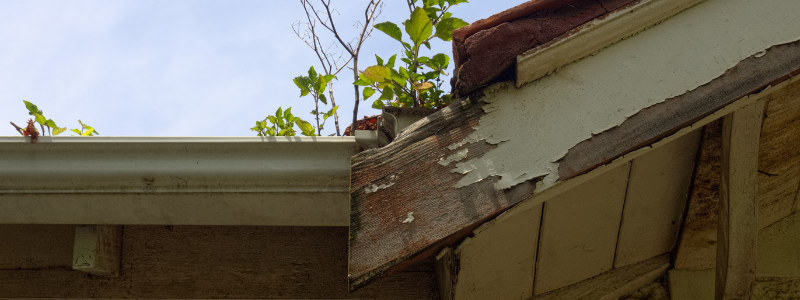
Colorado Climate and Your Roof
Intense Colorado weather can pose a challenge for roofs and their durability. A single day in Colorado can experience rain, snow, winds, hail, and sun — which can all have a damaging effect on your roof.
The National Roofing Contractors Association recommends getting your roof inspected after any significant weather event. In Colorado, it’s safest to perform roof inspections during fall and spring.
During Colorado winters, it’s common for ice dams to form on your roof. This prevents water on your roof from falling away, creating damp environments for fungi to grow and spread. A build-up of moisture on your roof can also cause water to leak into your home, further damaging its interior.
Additionally, a hail-damaged roof can result in a leak, creating optimal environments for mold, mildew, and fungus to grow and spread.
When Should I Check My Roof for Rot?
While regular roof maintenance is something we highly recommend, we understand that it isn’t a home maintenance check we do on a regular basis. No matter if it’s wet rot vs dry rot, it’s worth looking into.
Here is when we recommend checking for wood rot:
- When buying or selling a home.
- If there is ice, water, or tree damage to your roof.
- When replacing your roof.
- If your home has moisture issues.
- When installing new insulation or ventilation.
B&M Roofing and RoofSave
To prevent instances of wet and dry rot infestation, regular roof inspection and maintenance are highly recommended. At B&M Roofing, we offer RoofSave, a roof asset management program that allows you to always be informed about the current state of your roof.
If you suspect you have a wet or dry rot problem on your property, contact our specialists at B&M Roofing for advice and consultation, we’ll get a handle on it as soon as possible.
Roof Restoration
Amidst the scenic landscapes of Colorado, the roof of a home or business serves as a silent sentinel against the harsh weather. However, even the strongest roofs can face deterioration over time. This is where the concept of “Roof Restoration” comes in. Roof Restoration is not just a simple repair job; it is a comprehensive process that rejuvenates your existing roof, increasing its durability and lifespan. It is an important service that ensures the safety and longevity of the most important protective barrier of your property.
Understanding the importance of roof restoration is vital for every homeowner and business owner. A well-maintained roof not only provides shelter but also adds value to your property. In the ever-changing climate of Colorado, where harsh winters and sunny summers are the norms, ensuring your roof is in optimal condition is not just a matter of aesthetics but of safety and financial prudence.
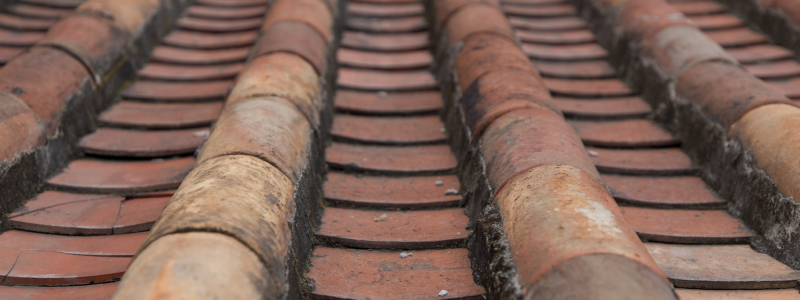
What Is the Difference Between Restoration and Replacement?
Roof Restoration is not just a buzzword in the roofing industry; it’s a strategic decision that offers a surplus of benefits to homeowners and business owners alike. Let’s delve into the advantages of opting for restoration over a complete roof replacement:
- Cost-Effectiveness: One of the most compelling reasons to choose Roof Restoration is its cost-saving potential. Restoration is typically more affordable than a full roof replacement, allowing property owners to achieve significant savings.
- Extended Roof Lifespan: A well-executed restoration can add years to your roof’s life, ensuring that you get the most out of your initial investment.
- Enhanced Energy Efficiency: A restored roof can improve the energy efficiency of your property. With the right materials and techniques, a restored roof can reflect more sunlight and absorb less heat, leading to cooler interiors and reduced air conditioning costs.
- Eco-Friendly Choice: Roof Restoration is an environmentally-friendly option. Instead of discarding old roofing materials, restoration reuses much of the existing material, reducing landfill waste.
- Minimal Disruption: Unlike a full replacement, which can be a lengthy and disruptive process, restoration is quicker and causes minimal disturbance to the occupants of the property.
- Preservation of Property Aesthetics: Restoration maintains the original look and feel of your property, ensuring that its aesthetic appeal remains intact.
Difference Between Restoration and Replacement: Clearing Common Misconceptions
When it comes to maintaining the integrity of your roof, understanding the distinction between “Roof Restoration” and roof replacement is crucial. These terms, while often used interchangeably, refer to two distinct processes, each with its own set of advantages and appropriate scenarios.
Roof Restoration:
- Definition: Roof Restoration involves rejuvenating the existing roof by addressing specific areas of damage, applying protective coatings, and enhancing its overall functionality without replacing the entire structure.
- Applicability: Ideal for roofs that are not extensively damaged but show signs of wear and tear. It’s a preventive measure that can extend the roof’s lifespan by several years.
- Benefits: More cost-effective than replacement, environmentally friendly due to reduced waste, and less disruptive to property occupants.
Roof Replacement:
- Definition: This process entails removing the entire existing roof and installing a new one from scratch. It’s a comprehensive solution that addresses severe or widespread damage.
- Applicability: Necessary when the roof has reached the end of its lifespan, has extensive damage, or when restoration is no longer a viable option.
- Benefits: Provides a fresh start with a new roof that can last for decades, ensures complete resolution of all existing issues, and can increase property value.
While both restoration and replacement have their merits, the decision between the two should be based on the roof’s condition, age, and the specific needs of the property.
What Are Some Tips for Roof Restoration? Best Practices
Roof Restoration is a meticulous process that requires careful planning and execution. For homeowners and business owners in Denver, Colorado, ensuring the effectiveness of the restoration process is paramount. Here are some best practices and things to consider for a successful Roof Restoration:
- Routine Inspections: Regularly inspect your roof for signs of damage or wear. Early detection can prevent minor issues from escalating into major problems.
- Choose Quality Materials: The longevity and effectiveness of your restoration largely depend on the materials used. Opt for high-quality, durable materials that can withstand the Colorado climate.
- Hire Experienced Professionals: The expertise of the contractor plays a significant role in the outcome of the restoration. Ensure you hire professionals with a proven track record in roof restoration.
- Timing Matters: The best time for roof restoration is during dry weather. Avoid rainy or snowy seasons as moisture can hinder the restoration process.
- Safety First: Ensure that all safety protocols are followed during the restoration. This includes using safety gear and ensuring that the work area is secure.
- Address Problem Areas: Pay special attention to areas that are prone to leaks or damage. These might include areas around chimneys, vents, and skylights.
- Stay Informed: Educate yourself about the restoration process. Being informed allows you to make better decisions and ensures that you get the best value for your money.

Roof Sealing: What Is It, And Is It a Good Idea For Your Roof?
One term that often emerges is “roof sealing.” But what exactly is roof sealing, and why is it considered beneficial for roofs, especially in places like Denver, Colorado?
Understanding Roof Sealing:
Roof sealing refers to the application of a protective layer or coating on the roof’s surface. This sealant acts as a barrier against external elements, such as rain, snow, and UV rays, preventing them from directly impacting the roof material. The primary purpose of roof sealing is to enhance the roof’s waterproofing capabilities, ensuring that water doesn’t seep into the underlying layers.
Benefits of Roof Sealing:
- Waterproofing: As mentioned, the primary benefit of roof sealing is its ability to repel water, reducing the chances of leaks and water damage.
- UV Protection: The sealant can reflect harmful UV rays, preventing them from deteriorating the roof material.
- Temperature Regulation: A sealed roof can help in regulating the temperature inside the building, leading to energy savings.
- Extended Roof Life: By protecting the roof from various external factors, sealing can extend the roof’s lifespan.
- Cost Savings: In the long run, a sealed roof requires less maintenance and repair, leading to cost savings for homeowners and business owners.
While roof sealing offers numerous benefits, it’s essential to ensure that the process is done correctly. Using high-quality sealants and hiring experienced professionals can make a significant difference in the outcome.
Roofing Supplies and Coating
The choice of roofing materials plays a pivotal role in the overall functionality and longevity of a roof. With an overabundance of options available in the market, understanding the significance of each material becomes crucial, especially when considering Roof Restoration.
Common Roofing Materials:
- Asphalt Shingles: One of the most popular choices, asphalt shingles are known for their durability and cost-effectiveness. They come in a variety of colors and styles, making them suitable for various architectural designs.
- Metal Roofing: Metal roofs are revered for their longevity and resistance to extreme weather conditions. They are also energy-efficient, reflecting sunlight and reducing cooling costs.
- Wood Shakes: Offering a natural and rustic appearance, wood shakes are made from split logs. They provide excellent insulation but require regular maintenance.
- Slate Tiles: Slate is a natural stone material known for its longevity and aesthetic appeal. While heavy, slate roofs can last for centuries with proper care.
- Clay or Concrete Tiles: These tiles are fire-resistant and can withstand harsh weather conditions. They are often used in regions with a hot climate due to their insulating properties.
Importance of Roofing Materials:
- Protection: The primary function of any roofing material is to offer protection against external elements like rain, snow, and UV rays.
- Energy Efficiency: Some materials, like metal roofing, reflect sunlight, leading to reduced energy costs.
- Aesthetic Appeal: The choice of material can enhance the visual appeal of a property, complementing its architectural style.
- Lifespan: High-quality materials can extend the life of the roof, reducing the need for frequent repairs or replacements.
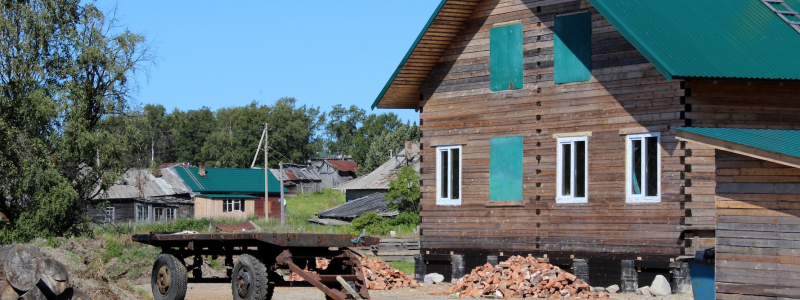
Informed Decisions for a Sturdy Roof: Wrapping Up the Essentials of Roof Restoration
The integrity of your roof is paramount for the safety and longevity of your property. Throughout our discussion on Roof Restoration, we’ve underscored its significance, from understanding its core principles to the benefits it offers over a complete overhaul. We’ve illuminated the protective shield that roof sealing provides and the pivotal role of various roofing materials in determining a roof’s durability.
Key Takeaways:
- Roof Restoration: A proactive approach that rejuvenates your existing roof, extending its lifespan, and warding off potential damages.
- Cost-Effectiveness: Restoration is often more affordable than a full replacement, making it a financially sound choice.
- Environmental Consideration: Opting for restoration over replacement is environmentally friendly, reducing waste and promoting sustainability.
- Protection and Aesthetics: Roof sealing and the choice of roofing materials not only ensure protection but also enhance the aesthetic appeal of your property.
For those in Denver, Colorado, regular roof maintenance and timely restoration are not mere suggestions but necessities. By being proactive, homeowners and business owners can ensure the safety of their property, making a wise financial decision in the process.
If roof restoration is on your horizon, don’t hesitate to reach out to B&M Roofing. Our seasoned team is poised to guide you, ensuring your property in Colorado stands tall against the test of time.
Metal Roof vs. Shingles
In the picturesque landscape of Denver, Colorado, where homes and businesses are often exposed to diverse weather conditions, the choice of roofing material becomes paramount. From scorching summer suns to unexpected hail storms, a roof must be resilient, durable, and efficient. Among the numerous roofing options available, two have consistently dominated discussions and considerations: metal roofs and asphalt shingles.
Metal roofs, with their sleek appearance and undeniable durability, have been a favorite for those looking for longevity and a modern touch to their property. On the other hand, asphalt shingles, with their classic appeal and cost-effectiveness, have been a staple in American homes for decades.
But how does one decide between the two? Is it merely a matter of aesthetics, or are there deeper factors at play? As we delve into the “Metal roof vs. shingles” debate, we aim to shed light on the pros and cons of each, offering homeowners and business owners in Denver a comprehensive guide to making an informed decision.
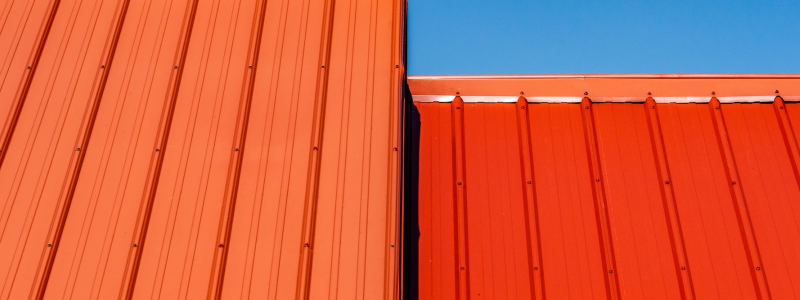
Pros of Metal Roofs: Are Metal Roofs Worth?
When considering the roofing options for your home or business it’s essential to weigh the advantages of each material. Metal roofs, in particular, have gained popularity for several compelling reasons:
- Durability: One of the most significant benefits of metal roofs is their exceptional durability. Unlike other materials, metal can withstand extreme weather conditions, from heavy snowfall to hail storms. This resilience ensures that your roof remains intact and functional for years to come. Metal roofs can offer a 10-25% reduction in cooling costs due to their ability to reflect the sun’s UV and infrared light rays.
- Energy Efficiency: Metal roofs are known for their energy-saving properties. Their reflective surfaces can deflect sunlight, reducing the amount of heat absorbed by your home. This means that during the hot summer months, your home remains cooler, leading to significant savings on air conditioning costs.
- Variety of Styles: Gone are the days when metal roofs were limited to a few designs. Today, they are available in a plethora of styles, colors, and finishes, allowing homeowners to choose a design that complements their property’s aesthetic.
- Eco-Friendly: Metal roofs are sustainable and environmentally friendly. Most metal roofing materials are made from recycled content, and once they reach the end of their lifespan, they can be recycled again, reducing landfill waste.
- Fire Resistance: Metal roofs are non-combustible, making them highly resistant to fire. This feature is especially beneficial in areas prone to wildfires, providing an added layer of protection to your property.
- Low Maintenance: Unlike other roofing materials that may require regular upkeep, metal roofs demand minimal maintenance. Occasional cleaning and inspection are generally all that’s needed to keep them in optimal condition.
Cons of Metal Roofs: Is A Metal Roof Cheaper Than Shingles?
When considering “Metal roof vs. shingles”, it’s essential to understand the potential drawbacks of metal roofing. While metal roofs offer numerous benefits, they also come with their own set of challenges:
- Initial Cost: Metal roofs tend to have a higher upfront cost compared to asphalt shingles. This can be a significant factor for homeowners and business owners working within tight budgets. However, it’s crucial to weigh this initial investment against the long-term savings and durability that metal roofs provide. Some sources highlight the affordability aspect, noting that metal roofs can be two or three times more expensive than other roofing materials.
- Noise: One common concern with metal roofs is the noise during heavy rain or hailstorms. The sound of raindrops or hail hitting the metal surface can be louder than on traditional shingle roofs. Proper insulation can mitigate this issue, but it’s a factor to consider, especially in areas prone to frequent rain.
- Potential for Denting: While metal roofs are durable, they can be susceptible to denting, especially in areas with frequent hailstorms. It’s essential to choose a high-quality metal roofing material to reduce the risk of denting.
- Expansion and Contraction: Metal roofs can expand and contract with temperature changes. Over time, this can lead to loosening of fasteners or other components, requiring additional maintenance.
- Specialized Installation: Installing a metal roof requires specialized skills and tools. It’s crucial to hire experienced professionals to ensure the roof is installed correctly, which can add to the overall cost.
- Aesthetic Concerns: Some homeowners prefer the traditional look of shingles over the more modern appearance of metal. While metal roofing comes in various styles and colors, it might not suit every architectural style.
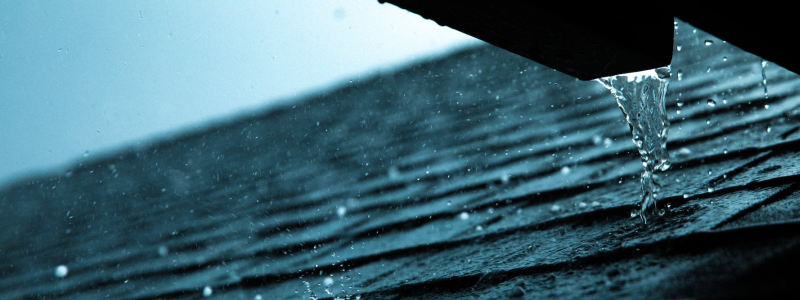
Pros of Shingles
In the debate of “Metal roof vs. shingles”, asphalt shingles stand out for several reasons that appeal to homeowners and business owners alike. Here are the primary advantages of shingle roofs:
- Affordability: One of the most significant benefits of shingle roofs is their cost-effectiveness. Compared to metal roofs, asphalt shingles are generally more affordable, making them a popular choice for those on a budget.
- Ease of Installation: Shingle roofs are relatively straightforward to install. Their flexibility and lightweight nature mean that they can be fitted quickly, reducing labor costs and installation time.
- Variety of Colors and Styles: Asphalt shingles come in a wide range of colors and styles, allowing homeowners to choose a design that complements the aesthetic of their property. Whether you’re looking for a traditional or contemporary look, there’s likely a shingle style to match.
- Repairability: If a section of your shingle roof gets damaged, it’s often easier and less costly to repair or replace individual shingles than to fix a metal roof.
- Sound Insulation: Unlike metal roofs, shingle roofs tend to offer better sound insulation, ensuring that noise from rain or hail is less intrusive.
- Familiarity: Given their popularity, many roofing contractors are familiar with shingle installation and repair, ensuring that homeowners have a wide range of experts to choose from.
Cons of Shingles
When considering “Metal roof vs. shingles”, it’s essential to understand the potential drawbacks of shingle roofs. Here are some of the primary disadvantages:
- Shorter Lifespan: While shingle roofs are affordable, they typically have a shorter lifespan than metal roofs. On average, asphalt shingles last between 15 to 30 years, depending on the quality and maintenance. Some sources even claim that they can last for over 50 years.
- Maintenance Requirements: Shingle roofs require more frequent maintenance to ensure their longevity. This includes regular inspections for damage, cleaning to remove debris and algae, and replacing damaged shingles.
- Vulnerability to Extreme Weather: Shingles can be damaged by high winds, hail, and other extreme weather conditions. They are also more susceptible to algae and moss growth, which can affect their appearance and functionality.
- Environmental Concerns: Unlike metal roofs, which are often made from recycled materials and are recyclable at the end of their life, asphalt shingles contribute to landfill waste.
- Potential for Increased Insurance Premiums: Some insurance companies may increase premiums for homes with shingle roofs, especially in areas prone to severe weather conditions.
- Heat Absorption: Shingles, especially darker ones, can absorb heat, which can increase cooling costs during the summer months.
Lifespan and Durability
When comparing “Metal roof vs. shingles” in terms of lifespan and durability, it’s crucial to understand the longevity of each roofing material.
How Long Do Metal Roofs Last:
Metal roofs are renowned for their impressive durability and extended lifespan. Depending on the material and maintenance, metal roofs can last between 40 to 70 years. Their resilience is attributed to their ability to withstand extreme weather conditions, from high winds to hailstorms. Furthermore, metal roofs are fire-resistant, moisture-proof, and inaccessible to most pests, ensuring their longevity.
How Long Do Shingles Last:
While asphalt shingles are widely popular due to their affordability and ease of installation, their lifespan is typically shorter than metal roofs. On average, asphalt shingles can last between 12 to 20 years, depending on the quality, maintenance, and environmental factors. Factors such as extreme weather conditions, mold, mildew, and rot can affect the longevity of shingle roofs.
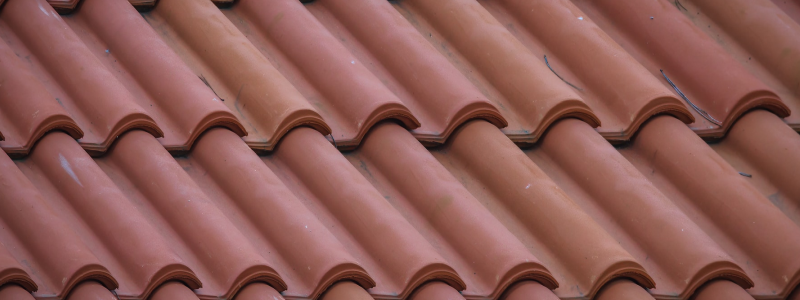
Final Recommendations
In the debate of “Metal roof vs. shingles”, both roofing materials present their unique advantages and challenges. Metal roofs are environmentally friendly, durable, and offer significant energy savings. On the other hand, shingles are widely recognized for their affordability, ease of installation, and versatility in design.
However, when considering the long-term benefits, metal roofs often come out ahead due to their extended lifespan, reduced maintenance needs, and energy efficiency. For homeowners and business owners in Denver, Colorado, it’s essential to weigh the initial costs against the long-term savings and benefits.
In conclusion, while shingles might be a suitable choice for those on a tight budget or with specific aesthetic preferences, metal roofs offer undeniable advantages in durability, lifespan, and eco-friendliness. If you’re contemplating a roofing project in Colorado, we recommend consulting with B&M Roofing. Our team of experts will provide guidance tailored to your specific needs, ensuring you make an informed decision for your residential or commercial property.
Winter Roof Maintenance Tips
Before winter arrives in full force, it is crucial to prioritize the maintenance and care of your roof. The cold weather, snow, and ice can pose significant challenges and potentially lead to serious roof damage if not properly addressed.
In the following paragraphs, we will provide essential tips for winter roof maintenance to help you prevent common roof problems, identify signs of leaks and damage, minimize ice dams, choose durable roofing materials, conduct thorough roof inspections, and maintain your gutters and downspouts. By implementing those tips, you can ensure the longevity and integrity of your roof throughout the winter season.
One of the key aspects of effective winter roof maintenance is conducting a thorough inspection before the cold weather sets in. This allows you to identify any existing issues and address them promptly. However, it is important to note that inspecting and maintaining your roof during winter can be challenging and dangerous, especially if you’re not experienced or equipped with the necessary tools and safety gear.
Contact the B&M Roofing professional team for your roof inspection. We have the expertise and equipment to perform simple and complex roof maintenance and replacement procedures.
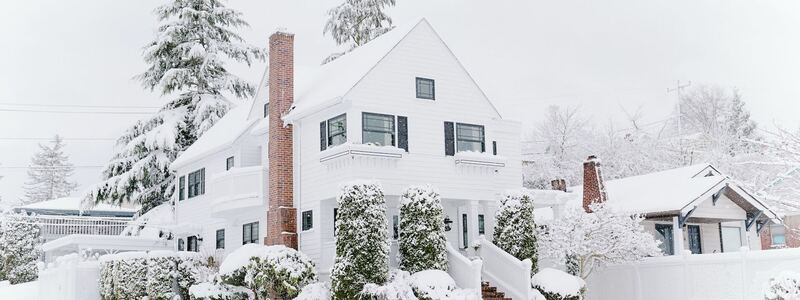
Common Roof Problems in Winter
Winter weather can worsen existing roof problems and create new challenges. It is essential to be aware of common roof issues during this season to address them promptly. Some common problems include:
- Ice Dams: Ice dams form when snow on the roof melts, then refreezes at the roof’s edges, creating a barrier that prevents proper drainage. This can lead to water seeping under the shingles and causing leaks and damage.
- Roof Leaks: Cold temperatures, snow, and ice can cause roofing materials to contract, creating gaps and potential points of entry for water. Leaks can occur when ice or snow melts and finds its way into these vulnerable areas.
- Snow Load: Snow accumulation can put excessive weight on the roof, leading to stress and potential structural damage if the roof is not properly designed or maintained.
- Condensation: Temperature differences between the warm interior of your home and the cold exterior can create condensation in the attic. The moisture can lead to mold growth, compromising not only the integrity of the roof but also making the house interior an unpleasant space to live in.
Signs of Roof Leaks and Damage in Winter
Identifying signs of leaks and damage before winter is crucial to address issues promptly and prevent further deterioration. Look out for the following signs:
- Water Stains: Check the interior walls and ceilings for water stains or discoloration, as they often indicate a roof leak.
- Dripping or Water Pools: If you notice dripping water or pools of water in your attic or ceiling, it clearly indicates a roof leak.
- Icicles and Ice Buildup: While icicles may seem harmless, they can be a sign of poor insulation and the potential for ice dams to form.
- Damaged or Missing Shingles: Inspect your roof for any damaged or missing shingles. Strong winds and ice buildup can cause shingles to become loose or get dislodged.
- Sagging or Uneven Roof Surface: A sagging or uneven roof surface can indicate structural issues caused by snow load or other underlying problems.
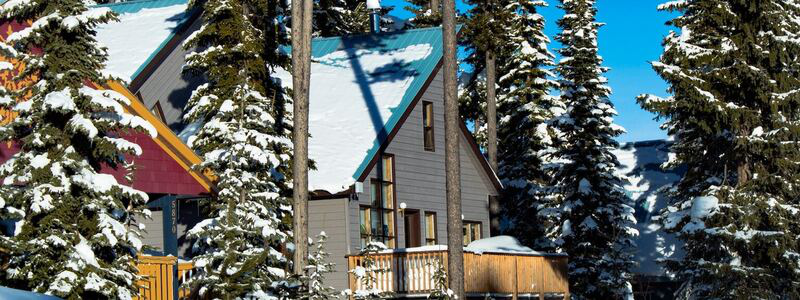
Tips for Preventing and Minimizing Ice Dams on the Roof
Ice dams are a common winter problem that can lead to significant roof damage if not addressed promptly. The following tips can help you prevent and minimize ice dams.
Insulate Your Attic
Proper attic insulation helps maintain a consistent temperature and prevents heat from escaping, reducing the risk of ice dams. Ensure that your attic has sufficient insulation and seal any air leaks.
Ventilate Your Attic Regularly
Proper attic ventilation helps regulate temperature and reduces moisture buildup. It allows for the escape of warm air, preventing it from melting snow on the roof and contributing to ice dam formation.
Remove Snow
Safely remove snow from your roof using a roof rake or hire professionals to do the job. Clearing snow helps prevent its accumulation and minimizes the likelihood of ice dams forming.
Install Ice and Water Shield
Consider installing ice and water shield membranes along the eaves and valleys of your roof. This provides an additional layer of protection against water infiltration caused by ice dams.
How to Choose the Right Roofing Materials for Winter Durability
Choosing the right roofing materials is essential for ensuring durability and performance during the winter season. Consider the following factors when selecting roofing materials:
- Material Durability: Opt for materials known for their durability and resistance to extreme weather conditions. Asphalt shingles, metal roofs, and slate tiles are popular choices due to their ability to withstand harsh winters.
- Slope and Pitch: Consider the slope and pitch of your roof. Steeper roofs allow snow to slide off more easily, reducing the risk of excessive snow accumulation and potential damage.
- Insulation Properties: Some roofing materials offer better insulation properties than others. Insulated metal panels, for example, provide excellent thermal resistance, helping to maintain a consistent temperature inside your home.
- Get Professional Advice: Seek advice from roofing professionals who can assess your needs and recommend the most suitable roofing materials for your climate and budget.
Schedule an inspection by the B&M Roofing team to discuss ways to improve your roof and ensure its longevity and safety.
Roof Inspection and Maintenance Before Winter
Roofs take a beating from the weather, and that weather can be harsh in some states, like Colorado. Roofs are one of the most important parts of a home or building because they protect the structure from natural elements such as wind, rain, ice, snow, extreme heat, and hail, but they can be damaged by those elements over time. Before winter arrives, conducting a comprehensive roof inspection and performing necessary maintenance tasks is crucial.
Hire a Professional Roofing Contractor
Consider hiring a professional roofing contractor, such as B&M Roofing, to inspect your roof thoroughly. They have the training to do it safely and the expertise to identify potential issues and provide appropriate recommendations.
Check Flashing and Sealants
Inspect the flashing around chimneys, vents, and skylights for any signs of damage or deterioration. Ensure that all sealants are intact and in good condition.
Clean Gutters and Downspouts
Clear your gutters and downspouts of leaves, debris, and any blockages. Debris uncleared from your roof can clog gutters and cause damage to your property. When gutters are clogged, rain and melted snow cannot drain properly, leading to a buildup of standing water. This can cause interior leaks and shorten the lifespan of your roof. In addition, the extra weight of the debris and water can bend your gutters or tear them away from the roof.
Trim Overhanging Branches
Trim any overhanging tree branches near your roof to minimize the risk of damage from falling limbs and reduce the accumulation of leaves and debris.
Preventing Roof Collapses Due to Heavy Snow
In regions with heavy snowfall, the weight of accumulated snow can pose a risk of roof collapse. Take these precautions to prevent roof collapses:
- Ensure Proper Roof Design and Construction: When constructing or renovating your home, ensure that the roof is designed to handle the expected snow load in your area. Consult with professionals to determine the appropriate roof pitch and structural requirements.
- Remove Snow from the Roof: Safely remove accumulated snow from your roof using a roof rake or hire professionals to do the job. Regular snow removal helps alleviate the excess weight on your roof.
- Strengthen Structural Support: Consider reinforcing your roof’s structural support if you live in an area prone to heavy snowfall. Consult with a structural engineer or a professional roofing contractor, such as B&M Roofing, to assess and reinforce your roof if necessary.
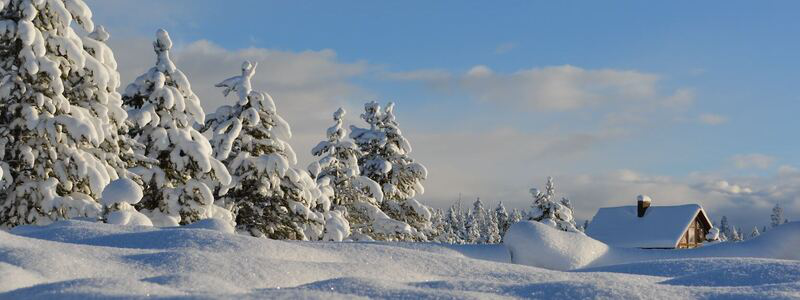
Gutter and Downspout Maintenance
Proper gutters and downspouts maintenance is essential for effective water drainage and preventing ice dams. Follow these tips:
- Clean your gutters at least twice a year, before and after winter, to remove leaves, debris, and any blockages. Clogged gutters can lead to water backup and potential damage to your roof.
- Regularly inspect your gutters and downspouts for signs of damage, such as cracks or sagging. Address any issues promptly to ensure proper water flow.
- If you haven’t done this yet, consider installing gutter guards to prevent debris from accumulating in your gutters and minimize the need for frequent cleaning.
- Check your downspouts to ensure they are properly connected and direct water away from your house’s foundation. Consider adding extensions if necessary to ensure proper water drainage.
Winter Roof Maintenance Tips | B&M Roofing Colorado
Proper winter roof maintenance is crucial for protecting your home and ensuring the longevity of your roof. You can safeguard your roof during the cold season by preventing ice dams, choosing the right roofing materials, conducting thorough inspections, and maintaining your gutters and downspouts.
When it comes to roof inspection and maintenance, you can rely on the expertise of the B&M Roofing team for professional guidance and quality services.
With proper preparation and maintenance, your roof will withstand extreme weather, providing peace of mind and a comfortable living environment.
Roof Replacement by Professionals | B&M Roofing
B&M Roofing has extensive experience in residential and commercial roofing, with a Colorado company providing quality service throughout the Centennial State since 1947.
The premier Colorado commercial roofing contractor uses only the highest quality roofing shingle suppliers: GAF and Owens Corning. We offer a wide range of colors and styles to choose from, ensuring that we can match the right roof shingle color to any home’s style.
We work with brands like GAF and Owens Corning to offer you a variety of roofing materials and colors to choose from and allow you to find the perfect color for your home. B&M is always available to help give your home’s roof the beauty it deserves.
Pros and Cons of Turbine Roof Vents
Turbine roof vents, often referred to as “whirlybirds,” have become a popular choice for homeowners and business owners in Denver, Colorado, who seek efficient ventilation solutions for their properties. Proper ventilation is crucial for any building, as it plays a pivotal role in maintaining a comfortable indoor environment, prolonging the lifespan of roofing materials, and ensuring energy efficiency. The pros and cons of turbine roof vents is a topic of interest for many, especially those who are considering installing or replacing their current ventilation system. These vents harness the power of wind to expel hot air from the attic, making them both energy-efficient and environmentally friendly. As we delve deeper into this topic, we’ll explore the numerous advantages and potential drawbacks of using turbine roof vents, providing valuable insights for homeowners and business owners alike.
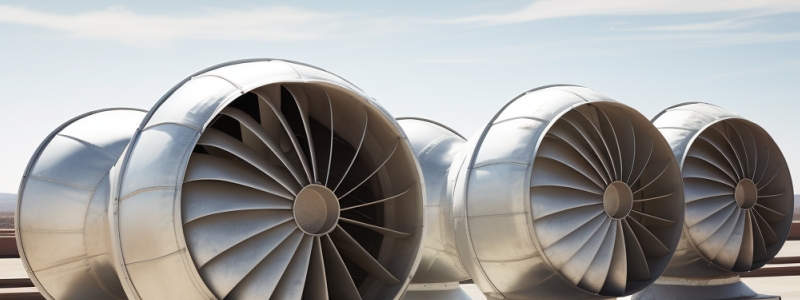
Advantages of Turbine Roof Vents
Among the pros and cons of turbine roof vents, the benefits should always come first. Turbine roof vents have gained significant traction among homeowners and business owners in Denver, Colorado, for these gains. One of the primary advantages of these vents is their energy efficiency. Unlike other ventilation systems that rely on electricity, turbine roof vents harness the natural power of the wind to operate. This not only reduces energy consumption but also translates to savings on electricity bills.
Furthermore, these vents are renowned for their effective ventilation capabilities. By drawing out hot and stale air from the attic, they promote a balanced and efficient airflow, which is crucial for maintaining a comfortable indoor temperature and preventing issues like mold and mildew growth. This article from Airflow Academy delves deeper into the benefits of turbine roof vents.
Another noteworthy advantage is their versatility. Turbine roof vents come in various sizes and designs, making them suitable for different roof types and architectural styles. Their durability is also commendable, with many homeowners reporting that their vents have withstood the test of time, even in challenging weather conditions.
Disadvantages of Turbine Roof Vents
After the advantages, the pros and cons of turbine roof vents topic must always include the most important shortcomings. It’s essential to understand their potential drawbacks before making an installation decision. Here are some of the disadvantages associated with turbine roof vents:
- Reliant on Winds: Turbine roof vents harness the power of wind to expel hot air from the attic. This reliance on wind is both their strength and weakness. On calm days with little to no wind, these vents may struggle to spin, reducing their efficiency. If your home is in an area with infrequent wind, turbine vents might not be the best choice.
- Prone to Damage: Being outdoor installations, whirlybirds are exposed to various weather conditions. They can be damaged by hail, strong winds, or even rust over time. Moreover, their moving parts make them more susceptible to wear and tear compared to static roof vents.
- Aesthetic Concerns: While functional, turbine roof vents are not always the most visually appealing. Their noticeable presence on the roof can potentially reduce a home’s curb appeal, especially if they are not well-maintained or have started to show signs of aging.
- Noise Levels: Initially, turbine vents operate quietly. However, as they age, their spinning components can wear out, leading to a whirring or squeaking noise. If you start hearing such sounds, it might be an indication that the vent requires maintenance or replacement.
- Potential for Leaks: If not properly installed or if damaged, turbine roof vents can become a source of leaks. Ensuring professional installation and regular inspections can mitigate this risk.
Comparison with Other Vent Types
When considering attic ventilation, homeowners and business owners have several options to choose from. Turbine roof vents are one such option. But how do they stack up against other vent types? Let’s delve into a comparison to provide a clearer understanding:
- Turbine Roof Vents vs. Flat Roof Vents: Turbine vents harness the power of wind to expel hot air from the attic. When the wind blows, they can move more air than flat vents. However, on calm days, their efficiency might be reduced. According to Family Handyman, replacing a turbine vent with a standard flat vent is acceptable as long as the vent is adequately sized for the attic’s square footage.
- Turbine Roof Vents vs. Ridge Vents: Ridge vents run along the roof’s peak and provide passive airflow. Unlike turbines, they don’t have moving parts and rely on natural convection. While ridge vents offer a more subtle appearance, turbine vents can provide superior ventilation when powered by wind.
- Turbine Roof Vents vs. Electrically Powered Vents: Electrically powered vents use fans to move air out of the attic. They can be set to activate at specific temperatures or humidity levels, ensuring consistent ventilation. While they offer precise control, they also consume electricity, unlike wind-powered turbine vents.
- Maintenance and Longevity: Turbine vents have moving parts, which can wear out over time. In contrast, static vents like ridge vents require minimal maintenance. However, with proper care, turbine vents can last for 20-25 years.
- Aesthetics: While turbine vents are functional, they might not be the most visually appealing option for every homeowner. Other vent types, like ridge vents, offer a more integrated look with the roofline.
- Cost: Turbine vents are generally more affordable than electrically powered vents. However, the total cost can vary based on the quality, brand, and installation charges.
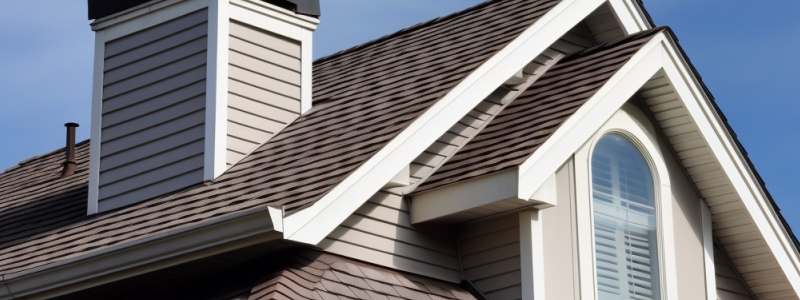
Considerations for Installation of Turbine Roof Vents
When considering the installation of turbine roof vents, it’s essential to be well-informed about the various factors that can influence the success and efficiency of the venting system. Here are some key considerations to keep in mind:
- Proper Sizing: The size of the turbine vent matters. It’s crucial to choose a size that matches the square footage of your attic space. A vent that’s too small won’t provide adequate ventilation, while one that’s too large can lead to unnecessary heat loss.
- Placement: The location of the turbine vent on the roof can affect its efficiency. Ideally, it should be placed at the highest point of the roof to effectively draw out the hot air. Avoid placing vents near obstructions or in areas where they might be shaded for long periods.
- Maintenance Access: Turbine vents have moving parts, and over time, they might require maintenance. Ensure that the vent is easily accessible for cleaning, lubrication, or potential repairs.
- Weather Conditions: While turbine vents are designed to prevent rain and snow from entering, it’s essential to consider the typical weather conditions in your area. In regions with heavy snowfall, for instance, ensure that the vent has adequate clearance from the roof’s surface to prevent snow accumulation.
- Professional Installation: While it might be tempting to install a turbine vent yourself, it’s recommended to hire a professional. Improper installation can lead to leaks, reduced efficiency, and potential damage to your roof structure.
- Material Choice: Turbine vents come in various materials, including aluminum and stainless steel. Choose a material that’s resistant to rust and corrosion, especially if you live in a coastal area or a region with high humidity
Safety Precautions for Turbine Roof Vents
Turbine roof vents, while efficient and eco-friendly, come with their own set of safety considerations. Ensuring that these vents are installed and maintained correctly is crucial to prevent potential hazards and ensure optimal performance. Here are some safety precautions to keep in mind:
- Secure Installation: Turbine vents, due to their rotating nature, can become dangerous projectiles in strong winds if not securely installed. Always ensure that the vents are anchored firmly to the roof structure.
- Regular Inspections: Over time, the moving parts of a turbine vent can wear out. Regularly inspect the vents for signs of wear and tear, rust, or damage. Address any issues promptly to prevent larger problems down the line.
- Avoid DIY Installations: While there are many DIY guides available, it’s recommended to hire a professional for the installation. Improper installation can lead to leaks, reduced efficiency, and potential damage to your roof structure.
- Seal Tightness: Ensure that the seal around the turbine vent is tight and waterproof. A loose seal can allow water to seep in, leading to potential water damage inside the property.
- Noise Considerations: Some turbine vents can produce noise, especially during high winds. If noise is a concern, consider investing in vents designed to operate quietly or adding noise-reducing measures.
- Winter Precautions: In areas with heavy snowfall, ensure that the vents are cleared of snow regularly. Snow accumulation can hinder the vent’s operation and add unnecessary weight to the roof.
- Debris Clearance: Regularly check and clear the vents of any debris, such as leaves or bird nests, that might obstruct airflow.
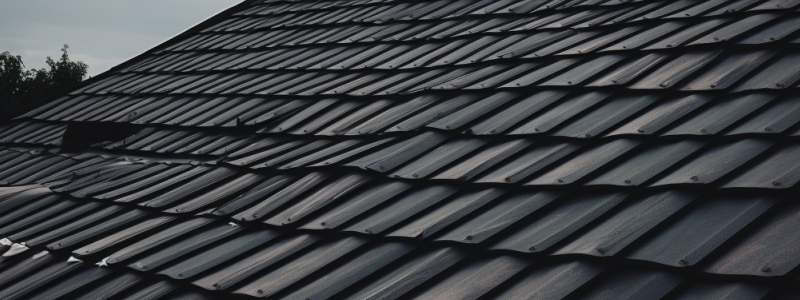
Summary
The pros and cons of turbine roof vents have been uncovered. Over the years, turbine roof vents have gained popularity among homeowners due to their efficiency and eco-friendly nature. These vents harness the power of the wind to create suction, effectively pulling air out of homes, especially in attics and crawl spaces. The primary advantage of turbine roof vents is their wind-powered operation, eliminating the need for electricity and offering significant cost savings. They also play a pivotal role in enhancing indoor air quality by expelling musty odors and contaminants.
However, like any other product, turbine roof vents come with their set of challenges. Improper installation can weaken the roof structure, and there’s a potential risk of water ingress if the seal isn’t tight. Additionally, their efficiency is contingent on windy conditions, and they can produce noise under certain circumstances. Despite these drawbacks, when installed and maintained correctly, turbine roof vents can be a valuable addition to homes, promoting energy efficiency, comfort, and roof longevity.
Should I Cover My Roof Turbines in the Winter?
For homeowners and business owners in Colorado, understanding the various components of roofing is crucial, especially when it comes to making informed decisions about maintenance and energy efficiency. One question that often arises, particularly as winter approaches, is: “Should I Cover My Roof Turbines in the Winter?” Roof turbines play a vital role in attic ventilation. But as the cold months draw near, many wonder if covering these turbines could offer additional benefits or protection. This article aims to shed light on this topic, providing you with the knowledge you need to make the best choice for your property.
Definition and Function of a Roof Turbine Vent
Roof turbines are a type of passive ventilation system designed to improve airflow within an attic space. These spinning roof vents are strategically placed on the roof to harness the power of the wind, allowing them to rotate and create a suction effect. This action draws out the hot, stale air from the attic, replacing it with cooler, fresh air from outside. The primary objective of a roof turbine vent is to regulate the temperature and moisture levels within the attic, preventing issues such as mold growth, wood rot, and damage to insulation. Proper ventilation is essential for maintaining the structural integrity of your home and ensuring energy efficiency. Roof turbines are especially beneficial in climates with significant temperature fluctuations, as they help in balancing the internal environment of the house. For more details on the mechanics of roof turbine vents, you can refer to this article.
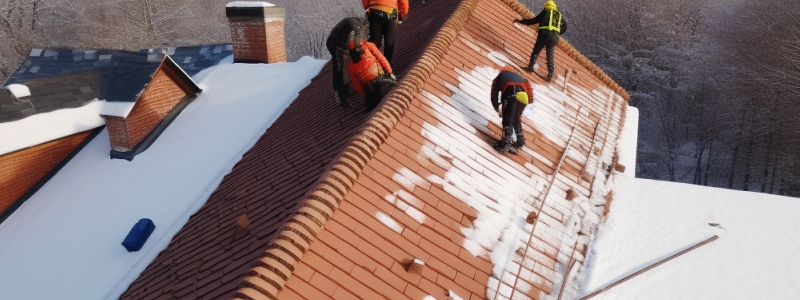
The Role of Turbine Vents for Roofs in Different Seasons
Roof turbine vents, commonly known as “whirlybirds,” play a crucial role in maintaining the health and efficiency of your home throughout the year. Their primary function is to facilitate the circulation of air in the attic, ensuring that excess heat and moisture are expelled. During the summer months, these vents help in releasing the accumulated hot air, preventing the attic from becoming a furnace and thereby reducing the strain on your air conditioning system. Conversely, in the winter, they aid in preventing the buildup of moisture, which can lead to mold growth and damage to insulation.
It’s a common misconception that these vents should be covered during the winter to conserve heat. However, according to the U.S. Department of Energy, proper attic ventilation is essential year-round. In colder climates, especially, the warm air from your home can rise and meet the cold surface of the roof, leading to condensation. Over time, this moisture can compromise the structural integrity of the roof, promote mold growth, and even damage stored items in the attic. By ensuring that turbine vents remain open and functional during the winter, homeowners can mitigate these risks and maintain a healthier living environment.
Pros and Cons of Having Turbine Roofs
“Should I Cover My Roof Turbines in the Winter?” is a question that many homeowners and business owners ponder. To answer this, it’s crucial to understand the advantages and disadvantages of turbine roof vents.
Advantages of Turbine Roof Vents:
- Cost-Effective: Turbine roof vents are generally less expensive to purchase and install. They are also more energy-efficient as they utilize wind power, leading to potential savings on electricity bills.
- Eco-Friendly: The wind powers these vents, making them an environmentally friendly option.
- Improved Air Quality: Turbine vents can enhance the air quality inside your home by expelling musty odors and other contaminants.
- Durable and Low Maintenance: Manufacturers make these vents from high-quality materials and design them to last. They require minimal upkeep, with occasional checks to ensure they are free of debris.
- Extend Roof Life: By venting out hot air and moisture, turbine vents can prolong the life of your roof, preventing potential damage from condensation and mold.
- Not Reliant on Electricity: As they are wind-powered, turbine vents can function even during power outages.
Potential Drawbacks of Turbine Roof Vents:
- Roof Integrity: If not properly installed, turbines can weaken the roof structure, leading to potential damage.
- Water Infiltration: Damaged turbines or poor sealing can allow water to seep into the home.
- Sunlight Blockage: Incorrectly placed turbines might shadow parts of the roof, affecting the home’s temperature.
- Safety Concerns: Loose turbine blades can become hazardous projectiles in strong winds.
- Dependent on Wind: Turbine vents are most effective in windy conditions. In areas with little wind, their efficiency might be compromised.
- Noise: Over time, turbine vents can become noisy, especially if there’s wear in the bearings or if debris gets caught in the blades.
In conclusion, while turbine roof vents offer numerous benefits, it’s essential to be aware of their potential drawbacks. Proper installation and regular maintenance can mitigate most of these concerns.
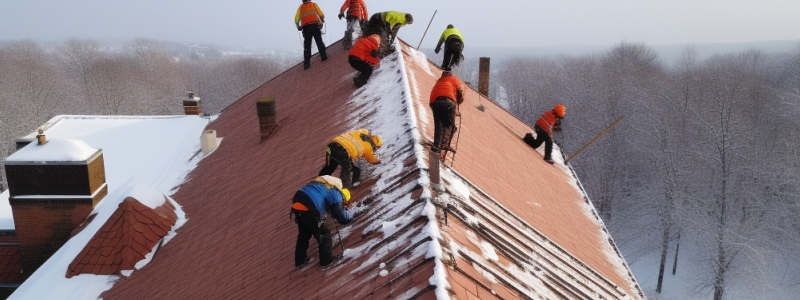
The Necessity and Benefits of Covers for Roof Turbines in Winter
Winter brings with it a host of challenges for homeowners, especially when it comes to maintaining the structural integrity and efficiency of their homes. One such challenge is the proper ventilation of the attic space, particularly in homes equipped with roof turbines.
Roof turbines play a crucial role in ensuring a healthy roofing system. Without proper ventilation, homeowners may face issues such as premature aging of the roof, damage to rafters and insulation, rotting wood, and the growth of mold and mildew. Additionally, ice dams can form, leading to increased strain on the building’s climate control, resulting in higher energy usage and expenses.
However, during the cold winter months, there’s a common misconception that covering these turbines can help conserve heat. While it’s true that covering roof turbines can reduce the amount of heat that escapes from the home, it’s essential to understand the potential dangers of doing so. Covering these vents can trap moisture in the attic, leading to various problems, including mold growth and damage to the home’s structural components.
A proper roof ventilation is vital to prevent mold, mildew, frost accumulation, wood rot, ice dams, and damage to shingles. Airflow prevents the growth of mildew or mold and helps regulate attic temperature. Extreme temperatures in the roof area can cause snow to melt and form ice on shingles and gutters. Proper ventilation during winter can extend the lifespan of the roof and its components.
Practical Advice and Considerations for Covering Roof Turbines in Colorado’s Winter Conditions
Colorado’s winter conditions are known for their harshness, with heavy snowfall, freezing temperatures, and strong winds. These conditions can pose challenges for home or commercial owners, especially when it comes to the maintenance and care of their roofing systems. “Should I Cover My Roof Turbines in the Winter?” is a question that many homeowners in Colorado grapple with. Let’s delve into some practical advice and considerations for this matter.
- Understand Colorado’s Winter Climate: Colorado experiences a continental climate, characterized by cold winters with frequent snowfall. The state’s mountainous regions can see even more extreme conditions. Homes in Colorado face exposure to moisture from snow and ice, which can seep into the attic without proper ventilation.
- Moisture Control: Proper ventilation is crucial to prevent moisture buildup in the attic. According to a guide on winter weather preparedness by the State of Colorado, moisture can lead to mold growth, wood rot, and damage to insulation. Covering roof turbines can trap this moisture, leading to these issues.
- Energy Efficiency: While covering roof turbines can conserve some heat, it’s essential to ensure that the attic remains well-insulated. This will prevent heat loss and keep the home warm without compromising ventilation.
- Regular Maintenance: Before the onset of winter, it’s a good practice to inspect the roof turbines for any signs of wear or damage. Make sure they spin freely and debris doesn’t obstruct them.
- Seek Professional Advice: If unsure about whether to cover the roof turbines, it’s always best to consult with a roofing expert or a home inspector familiar with Colorado’s winter conditions. They can provide tailored advice based on the specific needs of the home.
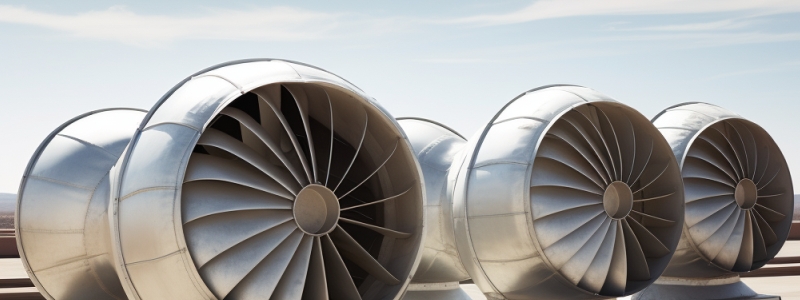
Summary
The question, “Should I Cover My Roof Turbines in the Winter?” has been thoroughly examined in this article. Roof turbines play a pivotal role in ensuring proper ventilation in homes, especially in attic spaces. Their primary function is to expel hot air and moisture, preventing potential issues like mold growth, wood rot, and damages.
Colorado’s unique winter conditions, characterized by heavy snowfall and freezing temperatures, can pose challenges for homeowners. While the idea of covering roof turbines might seem appealing to conserve heat, it’s essential to understand the broader implications. Covering these vents can trap moisture, leading to various problems, including mold growth and damage to the home’s structural components.
Proper ventilation is crucial to prevent moisture buildup and ensure the longevity of the roofing system. Homeowners should prioritize regular maintenance checks, ensuring that the turbines are free from obstructions and damage. Additionally, seeking professional advice can provide clarity and tailored recommendations based on individual home or commercial needs.
How To Tell If You Need A New Roof
A new roof is about more than just fixing the existing roofing system on your house. If you’ve never had a roofing system installed before, or if it’s been a while since your last roof was constructed, it can be difficult to know whether, or when, you need a new one.
In this article, we’ll explore how to tell if you need a new roof, some frequently asked questions, and how to get started on replacing yours.
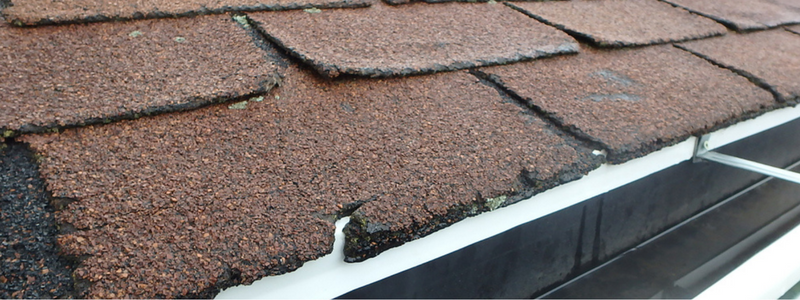
How To Tell If You Need A New Roof: Lifespan
There are a number of factors that affect your roof’s lifespan, including the materials used, quality of materials, maintenance, location, and climate.
The material used in a roof can be an indicator of how long it will last. Over time, certain types of roofs become brittle and susceptible to damage from wind or rain; therefore they may need to be replaced sooner than other types.
How long does roofing usually last?
The life expectancy of your roofing material depends on several factors, including the quality of installation, climate, and quality of materials. In general, shingles last anywhere from 20 to 50 years. Metal roofs can have a lifespan as long as 80 years. The lifespan for asphalt roofs is usually between 15 and 30 years, depending on the type and quality of the product used.
The average lifespan for a single layer of felt roofing is about 20 years. For multiple layers, it’s between 30 and 40 years in most climates (except those with extreme temperatures). If you live in an area where there are frequent snowstorms or high winds then your felt may not last that long before needing replacement because these types of weather conditions cause extra wear and tear on it over time which will eventually shorten its lifespan considerably.
For example, slate roofs have been known to last anywhere from 100 years to 250 years depending on where they’re installed. On the other hand, steel roofs have had lifespans ranging from 20-50 years depending on their quality and maintenance practices (which means regular inspections). Asphalt shingles are generally considered to be one of the least costly options but also one of the least durable – lasting only 8-12 years before they need replacement because they tend not to withstand harsh weather conditions as well as other materials like clay or concrete tile.
Is your roof older than 20 years?
One of the most quickly identifiable ways to know if you need a new roof starts when you examine the age of the existing roofing system. When your roof is older than 20 years, it is time to consider a new roof.
As a general benchmark, roofs generally last between 20 and 25 years. If your house was built before 1997 or so and you haven’t replaced the roof yet, it’s probably time to consider having a new roofing system installed.
Unsure if you need a replacement? These two things can help you determine if it is the right time:
- Shingles that are curling up at the edges (especially if there are visible signs of cracking)
- Small holes in shingles
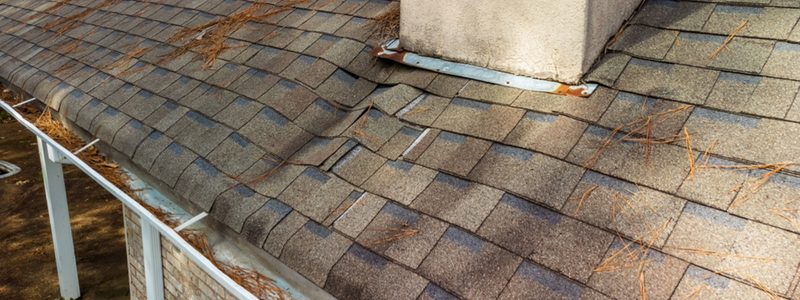
How To Tell If You Need A New Roof: Weather Damage
Water damage can be caused by several different factors. In Colorado, a storm can blow through town, causing rainwater to find its way into the attic or crawlspace under your home.
One way or another, if there’s moisture in places where it shouldn’t be (like inside of walls), then it could mean serious trouble for your roofing integrity as well as the structure of your home overall.
Are there new leaks or other signs of water damage in the house?
You can also tell if you need a new roof if you see new leaks or other signs of water damage in your house.
Heavy and recent storms can lead to needing a new roof. If you live in an area that is prone to severe weather, such as Colorado, you should inspect your roof after any storm. The best way to do this is to hire a professional roofing company that will inspect the roof for damage, but if you wish to inspect it yourself there are some things you should look for:
- Look for missing shingles or pieces of shingle that have been blown off
- Check for any splits or tears in the wood structure underneath that may be causing leaks
- Inspect vents and chimneys (if applicable)
Do you notice dark stains on your ceiling or walls from above your roofline?
Dark stains on your ceilings and walls are a sign of water damage. The stains indicate that there is an ongoing leak in the roofing system. As moisture gets into your home, it will cause mold to grow. Mold will leave dark stains on the ceiling or walls, which can lead to other problems such as allergic reactions and respiratory issues for occupants in your home.
If you notice these dark stains, it’s important to have them inspected by a professional roofer who can determine whether they’re caused by condensation or a leak in your roofing system.
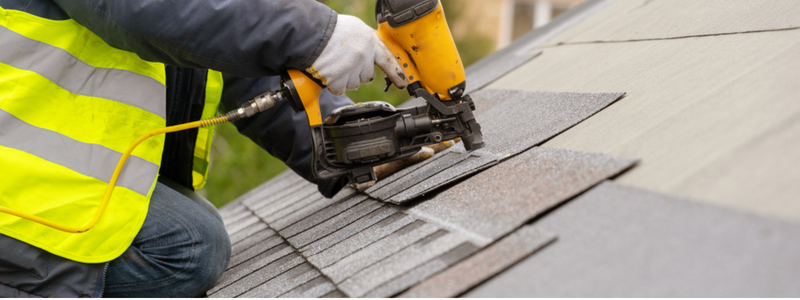
How To Tell If You Need A New Roof: Craftsmanship Issues
Is the roof sagging, warped, curved, or bubbling?
If the roof is sagging, warped, curved, or bubbling, these symptoms are indicative of a damaged roof that needs to be fixed. Sagging is caused by missing nails, while warping is usually caused by age and moisture. Bubbling can occur in areas where there’s been an excessive amount of moisture for an extended period of time.
Is there visible deterioration in the nails holding down your shingles to the roof structure?
It may be difficult to tell if your nails are loose or missing without careful inspection. If you do notice that some are broken, the shingle will likely be falling off in pieces or become totally gone.
In this case, you have a need for a new roof!
Rusty shingles and nails can also indicate that it’s high time to call in a professional roofer. While rusty nails aren’t necessarily an indication of damage yet (they could just mean that they’re old), they should still be inspected by a professional because of how much water comes into contact with them as part of your home’s plumbing system.
Are any of the shingles cracked, curled up, or broken?
If you find that any of the shingles are cracked, curled up, or broken, this is a sign that something is wrong with your roof. If you don’t replace these damaged shingles ASAP, they will start leaking and cause additional damage to your home.
FAQ: How To Tell If You Need A New Roof
How do you know when it’s time to change your roof?
Recognizing the signs of an aging or damaged roof is crucial. Look for indicators such as missing or curled shingles, frequent leaks, granules in the gutters, sagging roof valleys, and daylight coming through the roof boards. If you notice any of these signs, it might be time to consider a roof replacement.
What is the life expectancy of a roof?
The life expectancy of a roof largely depends on the material used. Asphalt shingle roofs typically last 20 to 25 years, while wooden shingles can last 30 to 40 years. Metal roofs have a lifespan of 40 to 70 years, and slate, copper, and tile roofs can last over 50 years. However, factors like climate, maintenance, and installation quality can influence a roof’s longevity.
How often should I replace the roof of my house?
The frequency of roof replacement depends on the roofing material, environmental conditions, and how well the roof has been maintained. On average, homeowners might need to replace their asphalt shingle roofs every 20 to 25 years. However, with regular inspections and timely repairs, some roofs can last longer. It’s always a good idea to consult with a roofing professional if you’re unsure about the condition of your roof.
How do you know if your roof is in bad shape?
Several signs can indicate a roof in poor condition. These include:
- Missing, broken, or curled shingles
- A large amount of shingle granules in the gutters
- Leaks or water stains on the ceiling or walls
- Sagging areas on the roof
- Moss or algae growth
- Rusted or damaged flashing
- Daylight visible through the roof boards
If you observe any of these signs, it’s advisable to get a professional roof inspection to determine the extent of the damage and the best course of action.
Get A Professional Opinion To Tell If You Need A New Roof
As dedicated roof experts, B&M Roofing offers expert services and care for commercial and residential projects across Colorado and nearby states. Whether you are looking for a new roof for your home or your office, or if you’re needing roof repair, we come equipped with extensive knowledge and comprehensive industry experience.
Our specialties include sheet metal roofs, commercial roofs, and residential maintenance and support. A team of highly trained and professional experts can provide a FREE estimate for any project.
Contact us today to learn more at (303) 443-5843.
Take a look at some of our past work so that you know how much quality workmanship goes into every job we complete.
Longest Lasting Roof Type
When it comes to investing in your property, few decisions are as significant as choosing the right roofing material. Not only does your roof safeguard your home or business from the elements, but it also plays a pivotal role in your property’s overall aesthetics and value. Among the many options available, one question looms large: What is the longest lasting roof type?
Every property is unique, and its roofing requirements reflect that. The team of B&M Roofing takes the time to assess your property’s specific needs, considering factors such as climate, architectural style, budget constraints, and long-term goals. Our experts offer tailored recommendations that align with your individual preferences and requirements.
In this article, we’ll explore what is the longest lasting and most durable roof type and material that can stand the test of time.
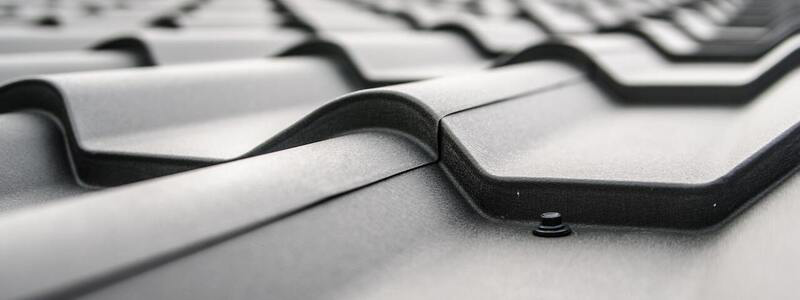
The Quest for the Longest Lasting Roof Type
Roofing materials vary widely in terms of lifespan, durability, and resilience. The longest-lasting roof type is one that strikes a harmonious balance between all these factors, providing you with decades of protection without constant maintenance or repairs. While there are several contenders, one material consistently stands out as the front-runner in terms of longevity and strength: slate roofing.
Slate Roofing: A Timeless Triumph
When it comes to a roof that’s not only built to last but also exudes an air of timeless elegance, slate roofing takes the crown. Crafted from natural stone, slate shingles offer a remarkable lifespan that can extend well beyond a century. This makes them a compelling choice for home and business owners seeking a roofing solution that doesn’t just provide shelter but tells a story of enduring quality.
What Makes Slate Roofs Last So Long?
The secret to the remarkable longevity of slate roofs lies in the material’s exceptional properties. Slate is a metamorphic rock formed from layers of sedimentary rock subjected to immense pressure and heat over time. This unique formation process results in incredibly dense slate, resistant to water absorption and impervious to temperature fluctuations. As a result, slate shingles maintain their structural integrity and appearance for decades, if not centuries.
The Perks of Opting for Slate
- Unmatched durability: Slate’s durability is practically unparalleled. It can withstand harsh weather conditions, including heavy rain, hail, snow, and high winds, without showing signs of wear or deterioration. A roof made of good slate installed properly on a strong support structure is common to last a couple of centuries or even more.
- Low maintenance: Unlike many other roofing materials that require frequent repairs or replacement, slate roofs demand minimal maintenance. The general idea is set it and forget it. Their resistance to water and other elements means you won’t have to worry about rot, mold, or other common roofing issues.
- Aesthetic appeal: Slate roofing adds an undeniable aesthetic charm to any structure beyond its practical benefits. Its natural, earthy tones and unique texture can enhance the architectural beauty of your home or business.
- Eco-friendly choice: Slate is a natural material that doesn’t require chemical treatments or manufacturing processes. Choosing slate is a sustainable choice that contributes to reducing your environmental footprint.
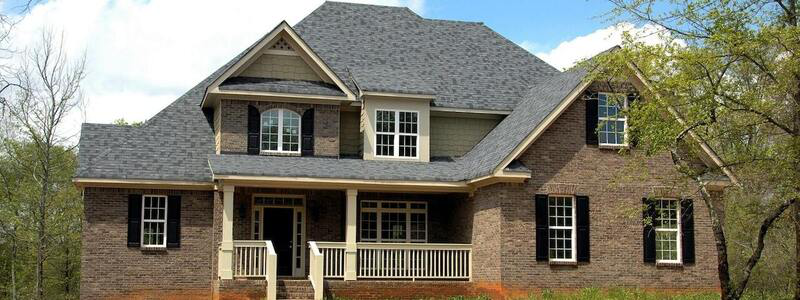
The Strength of the Alternatives
Selecting the suitable roofing material involves more than just aesthetic considerations. The decision can impact your property’s integrity, longevity, and value. When longevity is paramount, slate roofing emerges as the undisputed champion. Its innate durability, resistance to the elements, and timeless beauty make it an investment that pays dividends for generations. However, the alternatives, such as metal, concrete, and clay tile roofing, also offer impressive lifespans and unique benefits.
Metal Roofing: Enduring Excellence
Metal roofing has earned its reputation for durability by being an exceptional choice for homeowners and business owners seeking a long-lasting roofing solution. Though it feels like a modern solution, it has been around for centuries. The grayish rooftops of Paris get their color from zinc sheets first installed in the 1800s. The green color on many famous church domes is testimony to the theoretical conclusion that copper roofs can last 1000 years! And what other proud proof of copper sheet longevity than the Statue of Liberty itself?
This roofing category includes various metals, such as steel, copper and sometimes aluminum, each offering its unique benefits. Metal roofs typically provide a lifespan ranging from 40 to 70 years, contingent on factors like the specific material used and the level of maintenance upheld.
Why Metal Roofs Shine?
- Weather resilience: Metal roofs are engineered to withstand various weather conditions. They effortlessly shed snow, resist rainwater penetration, and endure high winds. This resilience makes them an excellent option for regions with extreme weather patterns.
- Durability: Metals like steel copper and aluminum possess inherent strength, ensuring that metal roofs hold up against impacts from hail, falling debris, and other potential hazards.
- Minimal maintenance: One of the key advantages of metal roofing is its low maintenance requirement. Metal roofs remain largely unaffected by these common issues, unlike materials that may succumb to rot, pests, or decay over time.
- Energy efficiency: Metal roofs often incorporate reflective coatings and various insulating layers that help reflect sunlight and heat away from the building, contributing to better energy efficiency and potential utility savings.
Concrete Tile Roofing: The Longevity of Concrete
Concrete tile roofing is a steadfast choice when longevity is a top priority. These tiles are known to endure for approximately 50 to 100 years, making them an investment that offers lasting protection. Concrete tiles are fashioned from a mixture of sand, water, and cement, which is then molded into shapes and cured to create robust roofing material.
Why Concrete Tiles Endure?
- Fire and pest resistance: Concrete tiles are non-combustible, rendering them highly fire-resistant. Additionally, their composition deters pests and rodents, enhancing the overall longevity of the roof.
- Color retention: These tiles are often pigmented with durable color coatings, which means they retain their appearance over the years, even in the face of constant exposure to the elements.
- Climate adaptability: Concrete tiles are engineered to withstand diverse climates. They can handle freeze-thaw cycles without cracking, crucial for regions prone to temperature fluctuations.
Clay Tile Roofing: The Classic Choice
Clay tile roofing carries an air of timelessness, dating back 5,000 years to glazed earthenware rooftops in China, and elegance that few other materials can match. Beyond its aesthetic allure, clay tile roofing boasts an impressive lifespan of 75 to 100 years or even more, making it a choice that resonates with history and longevity. In the quest for the longest lasting roof type, clay tile roofing is a strong candidate.
The Strengths of Clay Tiles
- Distinct aesthetic: The warm, earthy tones of clay tiles contribute to a unique Mediterranean or Spanish architectural style that enhances the visual appeal of any property.
- Weather endurance: Clay tiles are naturally resistant to extreme weather conditions, including UV radiation, high winds, and heavy rainfall.
- Fire resistance: Similar to concrete tiles, clay tiles are fire-resistant, which can provide peace of mind for homeowners concerned about fire hazards.
- Eco-friendly: Using natural clay and the absence of synthetic materials make clay tile roofing an environmentally friendly choice.
Asphalt Shingles: A Balance of Affordability and Durability
Asphalt shingles are a popular choice for their balance between affordability and durability. While they might not match the longevity of slate or concrete tiles, high-quality asphalt shingles can still offer a respectable lifespan of around 20 to 30 years.
The Benefits of Asphalt Shingles
- Cost-effectiveness: Asphalt shingles are often more budget-friendly than other roofing materials, making them an accessible choice for homeowners seeking durability without breaking the bank.
- Variety: These shingles come in a wide range of colors, styles, and textures, allowing you to find a look that complements your property’s aesthetics.
- Ease of installation and repairs: Asphalt shingles are relatively lightweight and easy to install or replace, saving labor costs during installation and any necessary repairs.
- Weather resistance: High-quality asphalt shingles are designed to withstand various weather conditions, including moderate wind and rain.
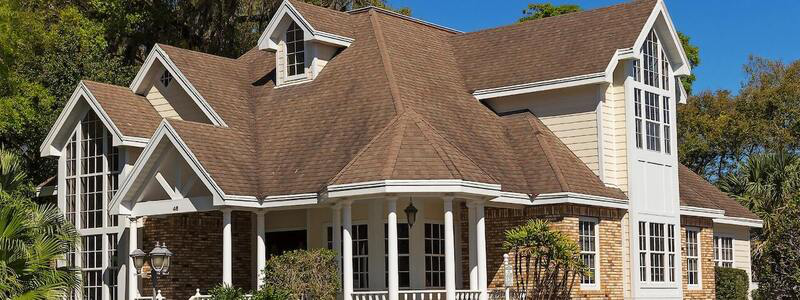
Longest Lasting Roof Type – B&M Roofing
Different roofing materials come with distinct advantages and potential drawbacks. B&M Roofing’s professionals are well-versed in the strengths and weaknesses of each material, enabling them to guide you toward the most suitable option based on your desired lifespan, aesthetic preferences, and maintenance expectations.
As you weigh your options, remember that a roof is more than just a protective covering; it’s a statement of durability, elegance, and longevity. Whether you’re looking to add character to your home or safeguard your business, the longest-lasting roof type will stand as a testament to your wise choice for years to come.
